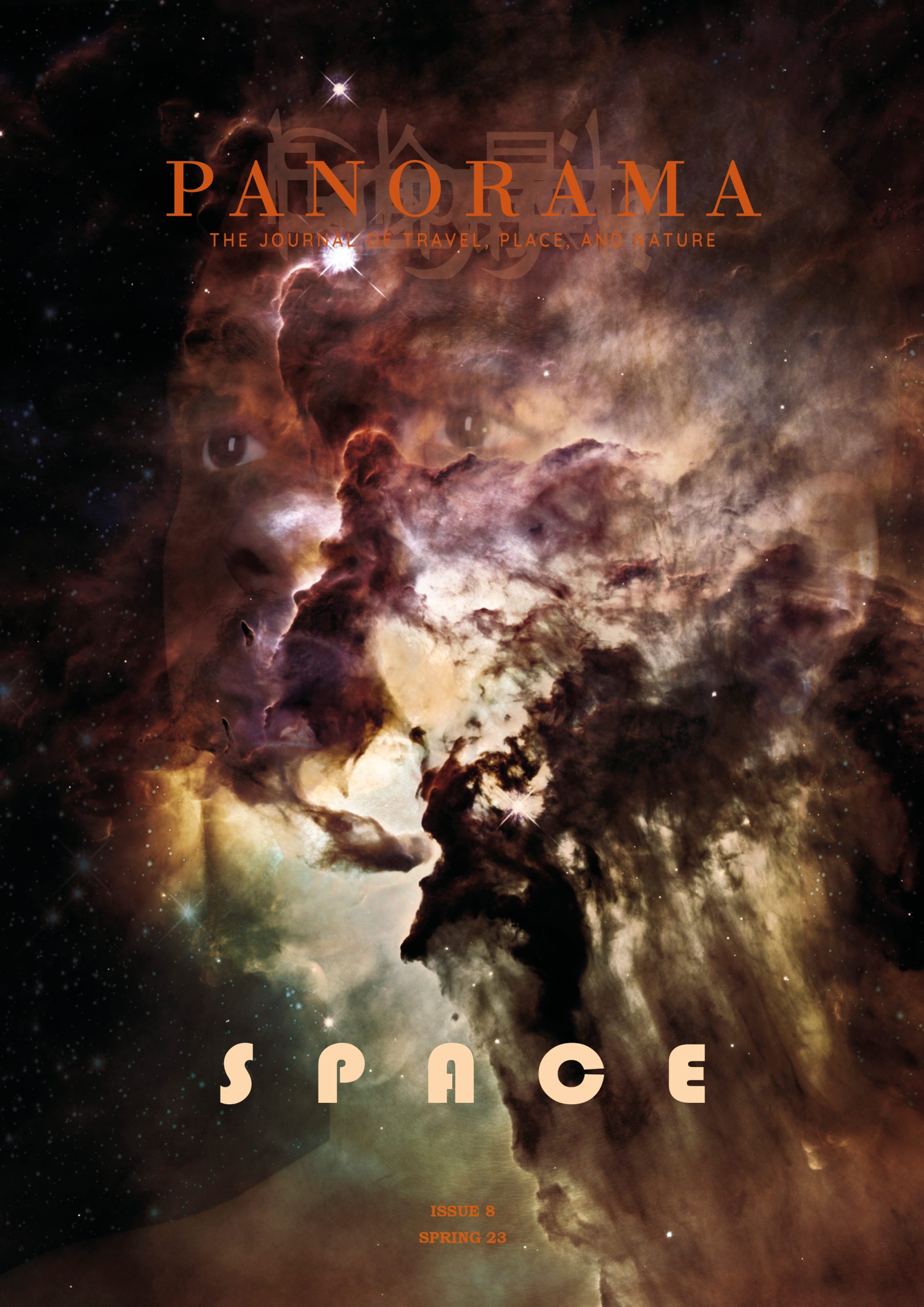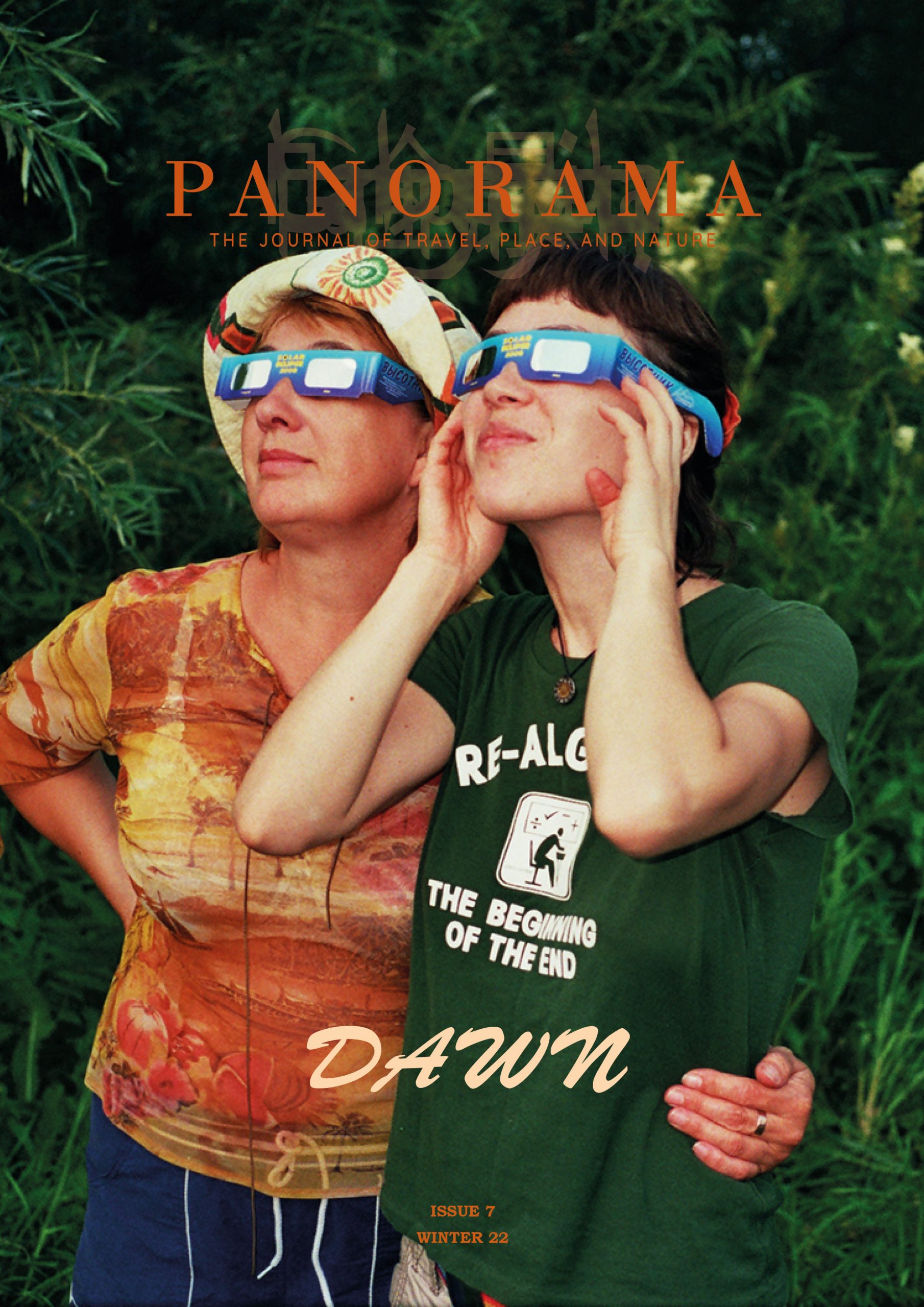I look at the traffic, coming in droves from all sides: mopeds, taxis, pick-up trucks, and bicycles. The mopeds are the most impressive; some solely carry their driver, others are laden with flowers, food, cartons, ducks, hens, pigs, and other animals, with cargo carried on baskets behind the driver, or on laps, or on a well-constructed and expertly balanced pyramid over the rear wheel. Others carry families, three kids flanking a parent, laying waste to the idea of a saloon or people mover as a household requirement. Lanes, to the foreigner’s eye, are nonexistent, and instead, one sees constantly created pathways as each vehicle finds its own way, in its own time. The moped engines are the loudest — a quick rev of each engine as they weave through the melee — but the tut-tut honk from the cars and trucks give them decent competition for volume. The sound, collectively, takes on a low-level roar.
On my first day in Saigon, I am intimidated by the streets, and stick close to Van, my old friend and host for the next two weeks. I confess this outright, so we can address it right away.
“Perfectly normal,” Van says as we approach our first intersection. Her gait is smooth and unhurried, perfected over eight years living in the city; her tone is calm and soothing, developed after welcoming countless Westerners here.
We stop at the curb and look at the waves of oncoming traffic. The impulse, whether Western or Darwinian, is to dart. But it turns out this is exactly the wrong thing to do.
“The trick is to wait for a break in traffic, then to walk out very slowly,” Van explains. “You want to keep a slow and even pace as you cross the street — it’s purposeful, and it gives the drivers a way to avoid you. If you’re slow and steady, they’ll go around you. If you run, they can’t react to what you’re doing, and you’ll get hit.”
There is no traffic light, so we wait for a space in the rush of mopeds, bicycles, taxis, and trucks. When one opens up, maybe the length of two cars, we step off the pavement. I follow Van’s lead, amazed. Our stride is slow and direct, and I notice Van makes eye contact with a few oncoming drivers. Her hand at her hip gives a slight pat-pat in the air. Everyone avoids us. We make it to the opposite side without incident.
The next day, I find myself on the back of a Vespa, helmet secured, the breeze rippling my ponytail and nape of my neck. The air is humid, both from the tropical temperatures and the collective exhaust. We’ve booked a four-hour motorbike tour of the city, trusting Van’s recommendation that this is the best way to see Vietnam. It’s from this perch that I discover the logic of Saigon traffic.
On the back of the motorbike, I’m a minnow in a school of fish, a subset of a much larger organism. Bobbing helmets differentiate us, some metallic, some crayon-hued, some adorned with corporate logos, the fonts recognisable anywhere. We move as if through water, streaming our way down grand boulevards, narrow alleys, and even storefronts. The pace is at once languid, yet direct. Fellow drivers surround us at all times, pressing in, but instead of feeling claustrophobic, it’s the opposite: I feel swaddled, calm. My driver opens up, full throttle, over bridges and in tunnels, goes gently around curves. At one point, we veer directly into a market, as though we were on foot, so close to the stalls I can see crabs in buckets, smell the catch of the day, or swipe a skewer from a charcoal barbecue. Back on the road, my driver takes me through the fabric district, the patterns — floral, geometric, animal — whizzing by. Later, I see similar fabrics draped over the laps and knees of female moped drivers, modern modesty panels so they can get around while still wearing a skirt. Mouth guards also offer a peek of individuality — hued squares, flags, or simple scarves show a little personality of the driver underneath.
What comes across above all, though, is how in tune the other drivers are with us, and vice versa. No one yells. Horns and headlights are used to communicate intent, not chastise. Eye contact is frequent.
“To the outsider looking at this, it seems like it would be a very stressful situation,” Kate, my friend and fellow American traveller, says. “You would expect everyone to be irate. And then you look more closely and it’s exactly the opposite — everyone is calm and looking out for each other. Their faces are pretty relaxed. Compare that to back home, where everyone is screaming at each other from behind the wheels of their big fancy cars.”
A moped pulls up next to us, a young couple, maybe in their late teens. The driver wears a face mask to block out the fumes; his girlfriend, mask-free, sips a soda from a tumbler. His front wheel turns ever so slightly to the left, then straightens out to balance.
I bet he turns left, I think to myself.
As the traffic starts to move, my driver lingers back. Without a word, the couple inches in front of us, then cuts left.
“All ok?” My driver calls out to me.
“Doing great!” I reply.
My confidence takes a hit in Hanoi, however. Hanoi traffic is unrelenting, with the same intuitive vibe among the drivers, but with a more menacing undertone. Breaks in traffic are few, and space is scarce. There is no room to be tentative here. The streets are narrow and twisty, with pedestrians, mopeds, cars, and bicyclists all jockeying for much tighter spaces. Diesel fumes choke the air.
In Hanoi, a moped hits Kate as we cross a major thoroughfare. Neither falls — it’s more of a bump than a crash — but we’re shaken up.
Over dinner that night, Suong, Van’s friend, grins when we tell her about the brush-up. “That’s the ‘Hanoi kiss’,” she explains. “It’s a badge of honour. If it had happened in Saigon, we would have called it your ‘Saigon tattoo’. I have one of each myself.”
The next morning, we rise early to go for a day tour of Ha Long Bay. Our tour van picks us up at our hotel and we weave through the Old Quarter, slowly, to get to the main highway outside the city. It’s 7:30 on a Wednesday morning, and we’re crawling, boxed in by the mopeds and taxis, and then, suddenly, we’re in the middle of a wedding.
The street-side stall, normally a purveyor of spices, has been cleared out to make room for an altar, deep red and crisp white, fifteen to twenty gleaming white chairs, ribboned in red, sit among festive streamers, lanterns, and flowers. Twinkling lights encircle a small canopy. A nervous-looking groom, outfitted in a tux, stands with an elder relative, posing for photographs. A professional photographer, well-dressed guests, and tourists in shorts and sneakers all crowd the street to snap away. Traffic, including us, manoeuvres around the festivities until we’re nearly right in the ceremony ourselves, and then, with just a jerk of the wheel, we’re on a different street entirely, leaving the party behind.
I have so many questions — is a weekday wedding ceremony normal? Will everyone just go back to work afterwards? But Chau, our tour guide, shrugs them off. (We later learn that, after an arranged marriage at 18, she’s now proudly divorced.)
We’ve been on the highway for 20 minutes when the sky begins to open up. It’s just a drizzle at first, but a few minutes in and the drops shape shift, morphing from skinny divas to plump opera belters, with their striking sounds to match. They pummel the windshield, but leave just slight streaks on the passenger-side windows, giving me a clear view of the adjacent mopeds.
Nearly single file, they all start to pull over to the shoulder, and a flurry of colours burst into view. Fuchsia pink, electric green, neon blue, navy blue, burgundy red, fire-engine red, lemony yellow, and more — the windbreakers quickly get unrolled, shaken out, pulled over business suits, casual T-shirts, backpacks and purses. Hoods get pulled up and drawstrings cinched tight. I see some unexpected logos on the back: Trung Nguyen (coffee), Vinamilk, Panasonic, each in bright white lettering.
They each in turn re-enter the traffic flow, some drivers now goggled, picking up speed as they bear down the road. Through my rainy lens, they cluster and break apart, a kaleidoscope of shifting hues and patterns en route to places I’ll never know, locales I’ll most likely never see. I wonder where Yellow Vinamilk is going, his bike laden with hens. Or the destination of Grape Purple woman, her cart a tower of roses, lilies, and carnations, an explosion of colour behind her.










